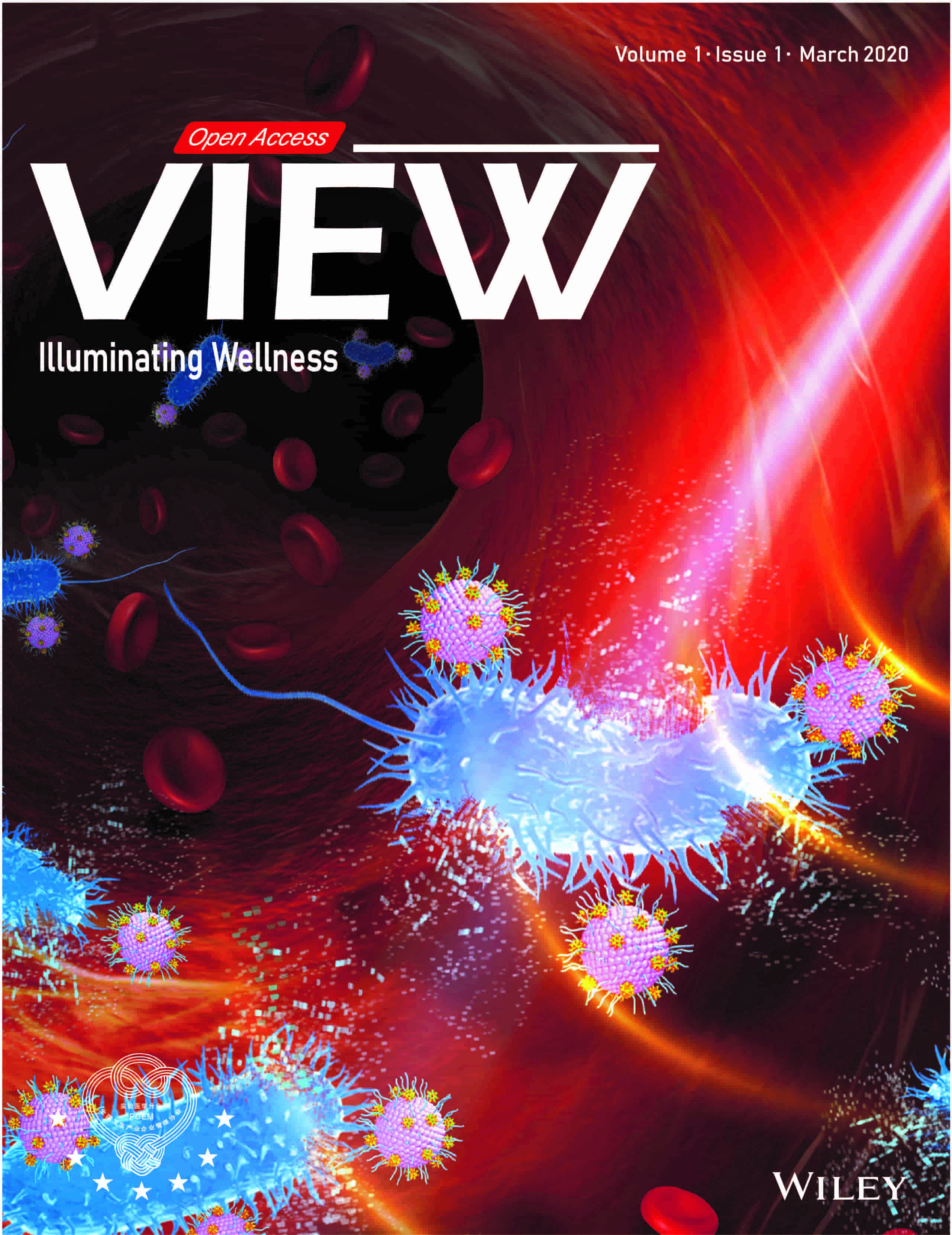用于体内细胞追踪的高性能细胞标记近红外-II 染料
IF 8.5
4区 医学
Q1 MATERIALS SCIENCE, BIOMATERIALS
引用次数: 0
摘要
在第二近红外(NIR-II,1000-3000 纳米)区域发光的荧光染料在血管和淋巴系统的实时高分辨率成像方面取得了重大进展。然而,在体内对标记细胞的命运进行 NIR-II 跟踪仍具有挑战性。在此,我们开发了一种屏蔽单元-供体-受体-供体-屏蔽单元(S-D-A-D-S)近红外-II 荧光团(FE-4ZW),该荧光团具有齐聚物末端基团,可在不使用细胞穿透肽的情况下高效标记细胞,从而增强了对细胞迁移位置的非侵入性体内测定。系链末端的磺胺内盐具有与细胞膜高亲和力的特点,因此即使对固定细胞也能进行稳定标记。细胞内化的 FE-4ZW 可以清楚地监测移植干细胞的命运以及肿瘤细胞在脑部或外周组织中沿淋巴系统迁移的情况。我们还证实,临床常用的表面活性剂--D-α-生育酚聚乙二醇-1000琥珀酸酯--能降低肝脏和脾脏对FE-4ZW的吸收。本文报告的荧光团设计策略和细胞标记技术为细胞迁移的可视化和迁移过程的深入研究开辟了新的领域,从而最终为更详细地研究干细胞治疗和肿瘤转移的内在机制提供了机会。本文章由计算机程序翻译,如有差异,请以英文原文为准。

A high-performance cell-labeling NIR-II dye for in vivo cell tracking
Fluorescent dyes that emit in the second near-infrared (NIR-II, 1000–3000 nm) region have provided significant advances toward real-time and high-resolution imaging of vessel and lymphatic system. However, in vivo NIR-II tracking of the fate of labeled cells still remains challenging. Here, we develop a shielding unit–donor–acceptor–donor–shielding unit (S-D-A-D-S) NIR-II fluorophore (FE-4ZW) with zwitterionic terminal groups for high-efficiency cell labeling without using cell-penetrating peptides, which provides for enhanced non-invasive in vivo determination of the location of cell migration. The tethering terminal sulfoammonium inner salts are featured with its high affinity for cell membranes, thereby enabling the stable labeling even for fixed cells. The fate of transplanted stem cell and the tumor cell migration along lymphatic system in brain or periphery tissues are clearly monitored by the cell-internalized FE-4ZW. We also confirmed that a clinically used surfactant, D-α-tocopheryl polyethylene glycol-1000 succinate, can reduce the liver and spleen uptake of FE-4ZW. The fluorophore design strategy and cell-labeling technology reported here open a new realm in the visualization of cell migration and insight into the relocation process, thereby ultimately providing an opportunity to investigate in greater detail of the underlying mechanisms of stem cell therapy and tumor metastasis.
求助全文
通过发布文献求助,成功后即可免费获取论文全文。
去求助
来源期刊

VIEW
Multiple-
CiteScore
12.60
自引率
2.30%
发文量
0
审稿时长
10 weeks
期刊介绍:
View publishes scientific articles studying novel crucial contributions in the areas of Biomaterials and General Chemistry. View features original academic papers which go through peer review by experts in the given subject area.View encourages submissions from the research community where the priority will be on the originality and the practical impact of the reported research.
 求助内容:
求助内容: 应助结果提醒方式:
应助结果提醒方式:


